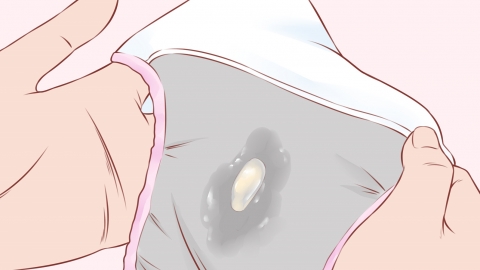What are the common symptoms of abnormal vaginal discharge?
Generally, common symptoms of abnormal vaginal discharge include increased volume of discharge, changes in color, alterations in texture, unusual odor, and itching of the vulva. A detailed analysis is as follows:

1. Increased Vaginal Discharge
Under physiological conditions, such as during ovulation or pregnancy, the volume of vaginal discharge may increase physiologically. However, when affected by gynecological inflammations such as vaginitis, cervicitis, or pelvic inflammatory disease, inflammatory stimulation can cause overactive secretion by glands in the vagina and cervix, leading to an abnormal increase in vaginal discharge.
2. Changes in Color of Vaginal Discharge
Normal vaginal discharge is white, paste-like, or resembles egg white. If the discharge turns yellow, it may indicate bacterial vaginosis or cervicitis. The overgrowth of bacteria in the vagina produces metabolic byproducts that alter the color of the discharge. Yellowish-green discharge accompanied by a foamy appearance may be caused by infection with Trichomonas vaginalis. The parasite resides in the vagina, damaging the vaginal mucosa and causing changes in the appearance and color of the discharge.
3. Changes in Texture of Vaginal Discharge
Vaginal discharge resembling cottage cheese is a typical symptom of fungal vaginitis (commonly Candida infection). The overgrowth of Candida albicans in the vagina disrupts the acid-base balance and microecological environment, resulting in a change in the texture of the discharge to a cottage cheese-like appearance. Watery discharge that is excessive and continuously flows out might be associated with fallopian tube cancer. Cancer cells stimulate epithelial cells in the fallopian tubes to secrete large amounts of fluid, which exits through the vagina.
4. Unusual Odor of Vaginal Discharge
Normal vaginal discharge has no distinct odor or may have a slightly fishy smell. If the discharge emits a foul odor, this is commonly seen in severe anaerobic bacterial infections, such as bacterial vaginosis. Anaerobic bacteria in the vagina break down substances, producing odorous compounds. If the discharge has a fishy odor, it is often indicative of bacterial vaginosis, which results from an imbalance in the normal vaginal flora, leading to excessive growth of anaerobic bacteria such as Gardnerella vaginalis.
5. Itching of the Vulva
Abnormal vaginal discharge contains numerous pathogens and inflammatory secretions. These substances can irritate the skin and mucous membranes of the vulva, potentially causing itching. For example, in cases of fungal vaginitis, the cottage cheese-like discharge can irritate the vulva and cause intense itching. Patients often scratch the area, leading to skin damage and swelling of the vulva.
In daily life, it is important to maintain personal hygiene, keep the vulva clean and dry, wash the vulva daily with warm water, change underwear frequently, and avoid using harsh cleansers that may disrupt the natural acid-base balance and microecological environment of the vagina.




